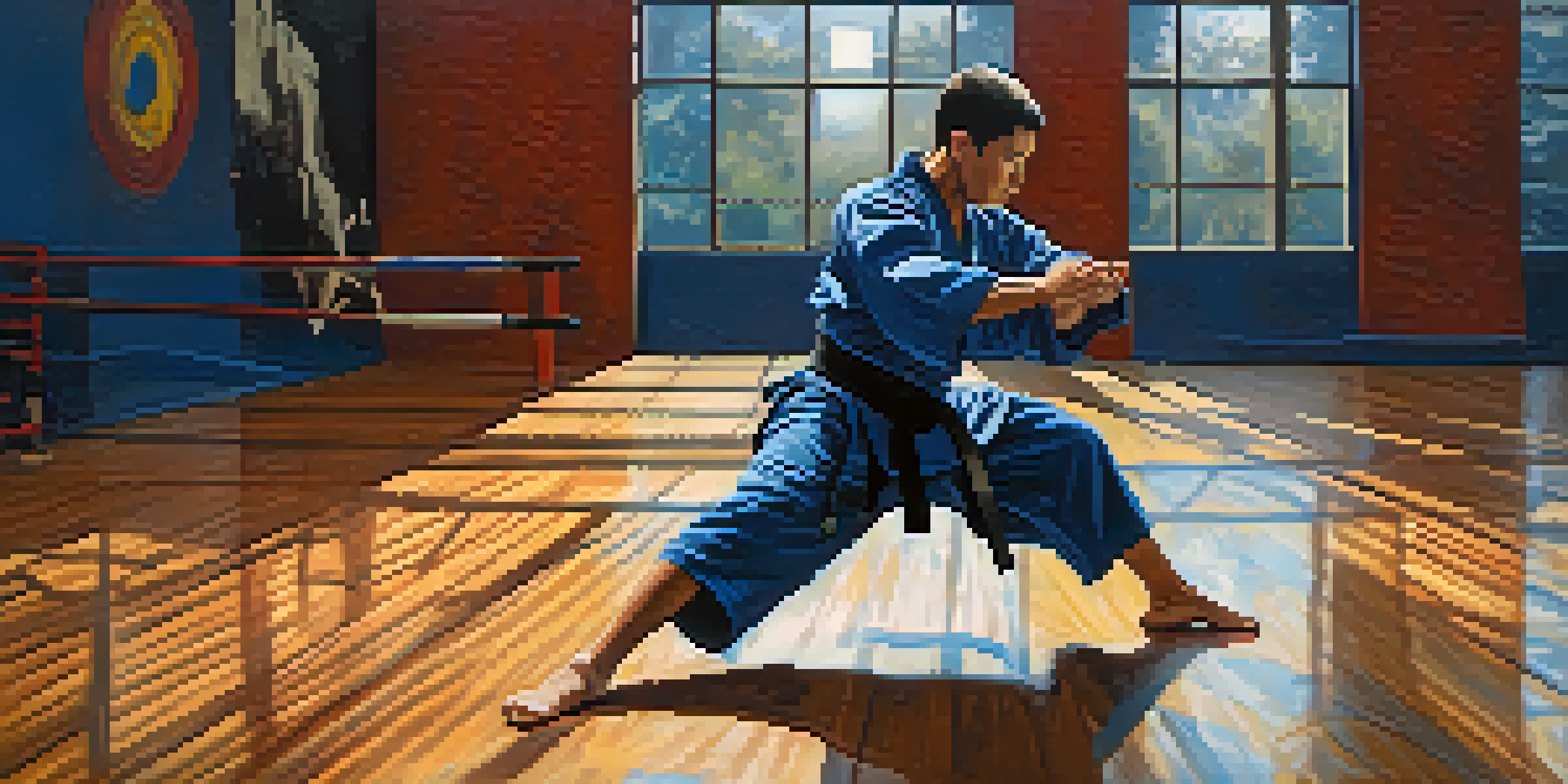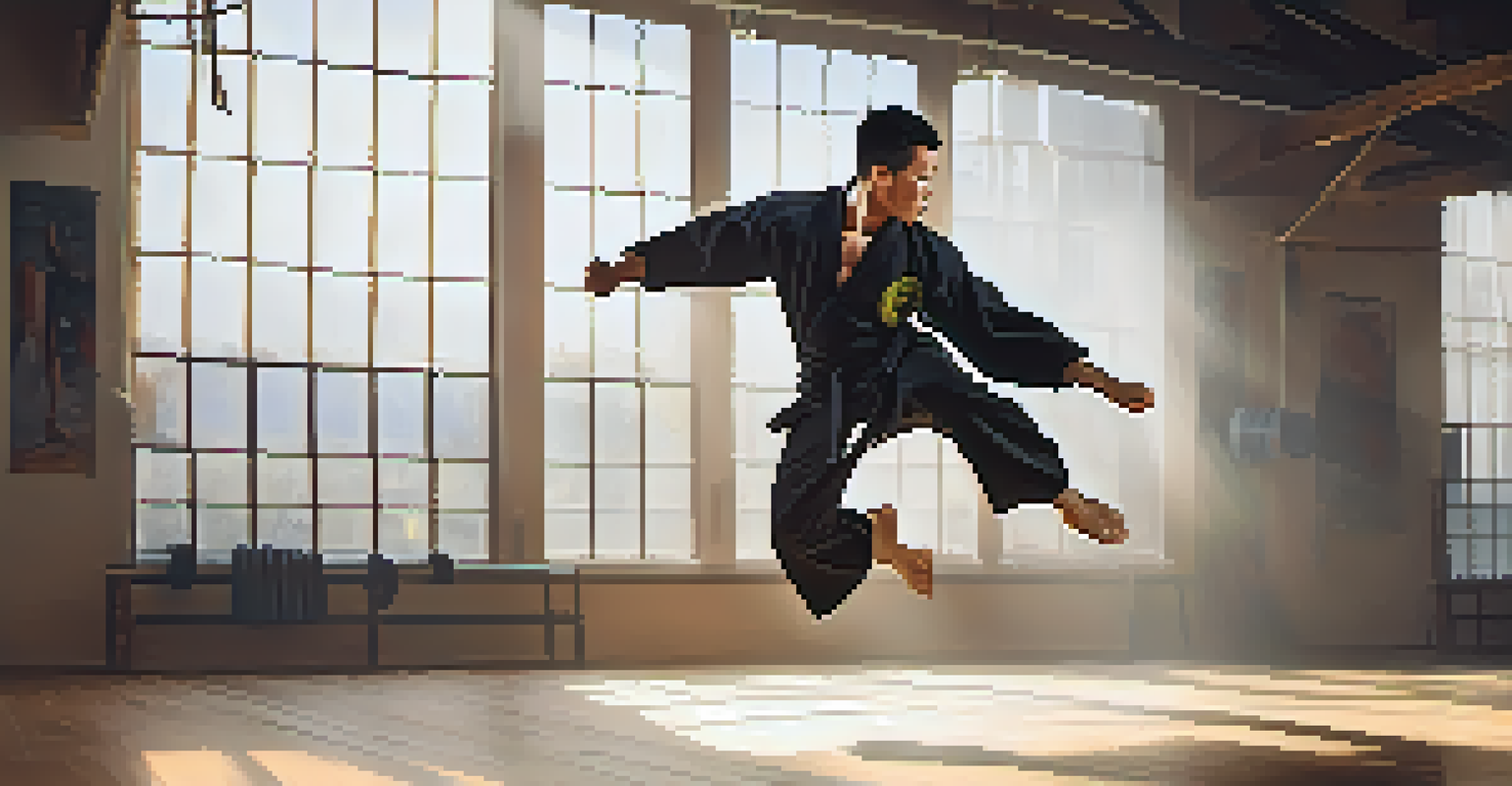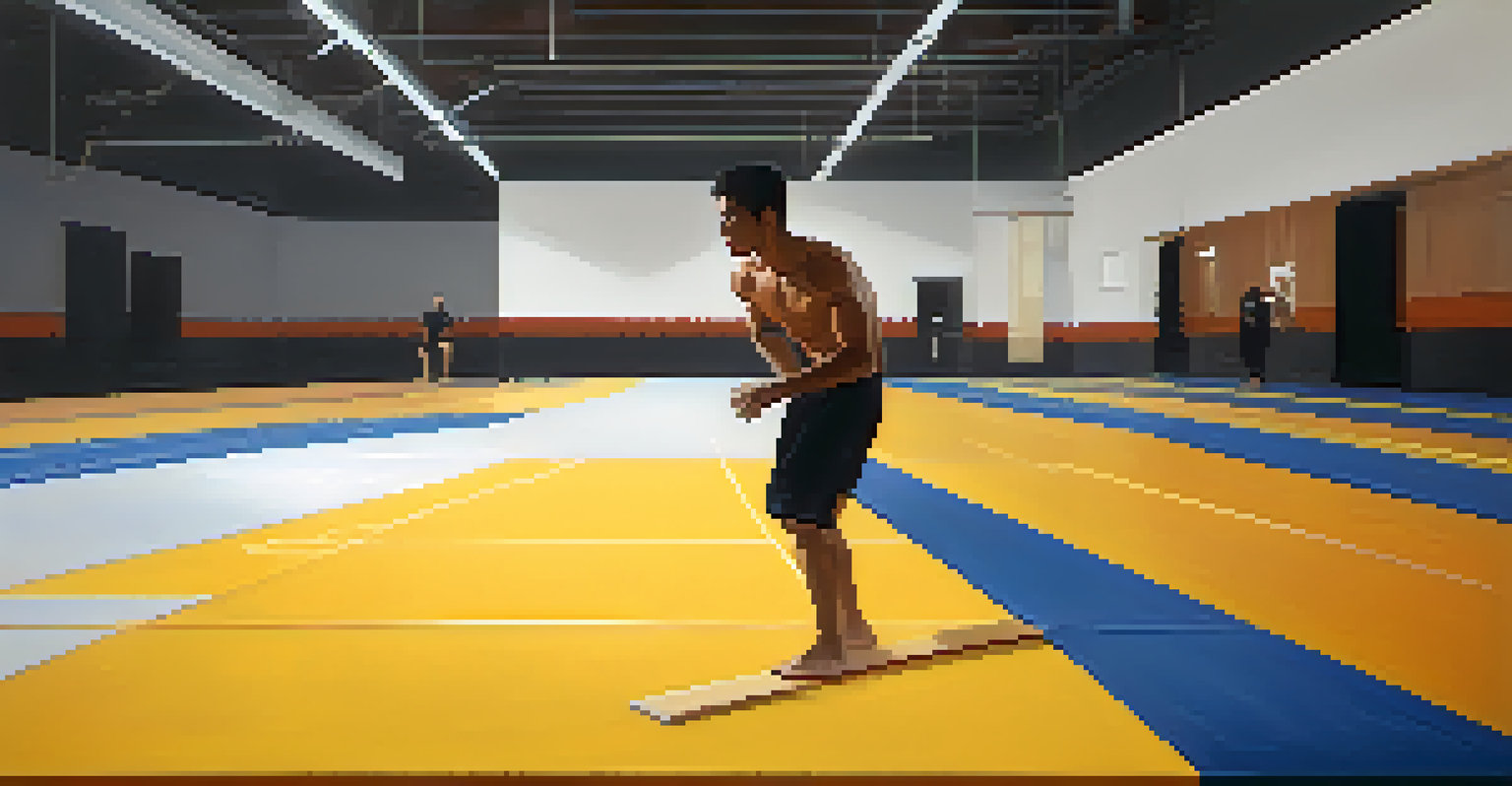Developing Agility: Key Drills for Martial Arts Performance

Understanding Agility in Martial Arts
Agility is a crucial component of martial arts, enabling practitioners to move quickly and efficiently. It involves the ability to change direction swiftly while maintaining control over one’s body. This skill is essential not only for offensive maneuvers but also for effective defense against opponents.
It is not the strongest of the species that survive, nor the most intelligent, but the one most responsive to change.
Think of agility like a cat on a hot tin roof—quick, precise movements are key to staying balanced and avoiding pitfalls. In martial arts, agility can mean the difference between landing a perfect strike and missing your target entirely. It’s about being light on your feet and ready for any situation that arises during training or competition.
By incorporating agility drills into your training routine, you can improve your overall performance and responsiveness. This enhancement will allow you to execute techniques with greater speed and precision, making you a formidable opponent in any combat scenario.
Lateral Movement Drills for Enhanced Agility
Lateral movement drills are essential for developing the side-to-side agility needed in martial arts. These drills mimic the quick, horizontal movements often required during sparring or self-defense scenarios. By practicing these movements, you'll build the muscle memory needed to react quickly in real-life situations.

One effective drill is the lateral shuffle, where you move side-to-side in a low stance, maintaining balance. Start slowly, then gradually increase your speed to challenge your agility and coordination. This drill not only improves your lateral movement but also strengthens your legs and core, which are vital for all martial arts techniques.
Agility Enhances Martial Arts Skills
Agility is essential for martial artists, allowing for quick movements and effective responses in both offense and defense.
Incorporating these drills into your warm-up routine can significantly enhance your performance. As you become more agile laterally, you'll find it easier to evade attacks and close the distance when striking, making you a more versatile martial artist.
Plyometric Exercises to Boost Speed and Power
Plyometric exercises are a fantastic way to increase both speed and power, crucial elements of agility in martial arts. These explosive movements train your body to react quickly, enabling you to harness your strength more effectively. Think of plyometrics as the turbo boost for your agility training.
The more you sweat in training, the less you bleed in battle.
Common plyometric exercises include jump squats and box jumps, which engage multiple muscle groups while improving your reaction time. For example, performing jump squats will help you generate explosive power from a stationary position, allowing you to launch into your strikes with greater force. As you practice these movements, pay attention to your form to prevent injury.
Integrating plyometric exercises into your training can lead to noticeable improvements in your martial arts performance. With increased power and speed, you’ll find it easier to outmaneuver your opponents, making your techniques more effective and impactful.
Footwork Drills for Better Balance and Coordination
Footwork is the foundation of agility in martial arts, as it dictates how quickly and efficiently you can move. Practicing specific footwork drills helps enhance your balance and coordination, allowing you to position yourself optimally during combat. Just like a dancer, your footwork can make or break your performance.
One popular drill is the ladder drill, where you use an agility ladder laid on the ground to perform various foot patterns. This exercise not only improves your foot speed but also helps you develop body awareness and control. As you become more familiar with the movements, you can increase the intensity to challenge yourself further.
Variety in Training Boosts Agility
Incorporating a mix of lateral movement, plyometric, and reaction time drills can enhance overall agility and performance.
By focusing on footwork, you’ll find that your overall movement in sparring becomes more fluid and dynamic. Good footwork keeps you light on your feet, enabling you to evade attacks while positioning yourself for your own strikes.
Reaction Time Drills to Sharpen Your Instincts
Improving your reaction time is essential for agility, as it allows you to respond to your opponent's movements effectively. Reaction time drills can help you sharpen your instincts, making you quicker in both offense and defense. Imagine being a boxer dodging punches—your ability to react swiftly can keep you in the game.
One effective drill is using a partner or coach who randomly calls out commands or throws objects at you. Your job is to react as quickly as possible, either by dodging, blocking, or countering. This type of training not only enhances your reflexes but also simulates the unpredictability of a real fight.
Incorporating reaction time drills into your training can lead to significant improvements in your overall agility. With faster reactions, you’ll find that you can anticipate your opponent’s moves better, giving you a strategic advantage during sparring sessions.
Incorporating Agility Training into Your Routine
Integrating agility training into your martial arts routine is essential for continuous improvement. Start by setting aside specific days for agility drills, ensuring you balance them with your regular training sessions. Like adding spices to a dish, agility training enhances the overall flavor of your martial arts practice.
It's important to mix different types of agility drills to keep your training engaging and effective. Combine footwork, plyometrics, and reaction time drills to create a well-rounded program that targets various aspects of agility. By varying your exercises, you’ll maintain motivation and challenge your body in new ways.
Tracking Progress Keeps You Motivated
Maintaining a training journal and setting specific goals helps track improvements and sustain motivation in agility training.
Remember, consistency is key in developing agility. Commit to regular practice, and you’ll see how these improvements translate into better performance during training and competitions, ultimately making you a more skilled martial artist.
Tracking Your Progress and Staying Motivated
As you embark on your agility training journey, tracking your progress is vital for motivation and improvement. Keeping a training journal can help you document your workouts, noting which drills you've performed and any improvements you've noticed. This reflection can provide a sense of accomplishment, encouraging you to keep pushing forward.
Consider setting specific goals for your agility training, such as increasing your speed or mastering a new drill. By having measurable objectives, you can celebrate your milestones, no matter how small. These celebrations can remind you of your commitment to growth and development in martial arts.

Staying motivated can sometimes be challenging, but surrounding yourself with a supportive training community can make a difference. Share your goals and progress with fellow martial artists, and encourage each other to stay on track. After all, training together can make the journey more enjoyable and rewarding.